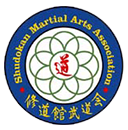Hataraki
By Muromoto, WayneThis article first appeared in the “SMAA Journal,” Volume 19, Issue 3.
When you practice kata, do you think about improvising?
When is it appropriate to improvise in kata training?
Sometimes things just don’t go as you planned it. Or, as the Scottish poet Robert Burns would say, “The best laid schemes o’ mice and men gang aft agley (often go astray).”
We’ve stressed the importance of repetitious training in order to be “natural.” Kata training is really glorified repetitive drill training (well, it’s more than that, but mainly it’s drilling) that is supposed to embed movements and reactions into your body and mind, so that you don’t need to spend precious amounts of time cogitating over whether or not to block, say, a sword stroke at your head or scream like a little girl and just die. Hopefully, through such training, you won’t curl up and die should the actual time arise.
On the other hand, you may have trained incessantly for a specific action, but when the time comes, the situation is not quite right, and your technique needs to be altered in order for it to work. For martial artists who have a component of training with a resistive partner (as in sparring), “catch as catch can” action-reaction is nearly second nature. No partner is going to let you apply that chokehold perfectly without resistance in judo mat work, for instance. So, you improvise. For kata-based training, however, developing this ability to improvise is a bit more problematic, but still important nevertheless. Not everyone is going to come at you with a perfect forward-leaning stance so you can throw him magnificently in a kote-gaeshi, for example. In a self-defense situation, you may have to improvise a lot to get that throw to work.
Although in kata geiko (“forms training”) it’s best to try to perfect the kata as is, unless you are aware of the possibility of your partner “breaking” the form and going at you in a different way, you’re just going through the motions. You don’t have the right frame of mind of being focused on executing the right counter to the right attack. That’s why solo kata exercises are great for developing your own stance, balance and timing, but it’s a good idea to also include partner-based training or some form of free exchange. For kata-based systems, going overboard with “free exchange” might taint the style with too much emphasis on sports budo. But sans that, working in kata with different partners, who have different heights, weights, timing, and attack patterns is a decent way to develop the ability to adjust one’s form.
Thus, if you look at the few solo-type kata styles, such as iaido, karate-do, or even a Chinese art like Tai Chi Ch’uan, the solo exercises are always augmented in some way with partner-based training. You never know what a partner will think of doing, even in a regulated exercise. Your distancing, angles of counter, and attacks will change according to your partners.
The ability to improvise is not absent in traditional Japanese budo. It’s there, but most beginners don’t know about it, because the emphasis in the beginning is on getting the form right. Later, when the “form” is inherent in your moves, you should be able to “break” the form, yet still move within the framework of what you learned in the style.
Grow Your Skillset at a Japanese Martial Arts Organization
SMAA is a martial arts organization dedicated to preserving traditional Japanese budo in the west. To get more details about joining, call (734) 720-0330 or submit a contact form here.

